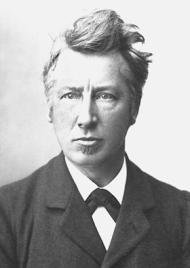The Burgess Shale Formation, located in the Canadian Rockies of British Columbia, is one of the world's most celebrated fossil fields. It is famous for the exceptional preservation of the soft parts of its fossils. At 505 million years (Middle Cambrian) old, it is one of the earliest fossil beds containing soft-part imprints.
The rock unit is a black shale and crops out at a number of localities near the town of Field in Yoho National Park and the Kicking Horse Pass. Another outcrop is in Kootenay National Park 42 km to the south.
History and significance
The Burgess Shale was discovered by palaeontologist Charles Walcott on 30 August 1909, towards the end of the season's fieldwork. He returned in 1910 with his sons, daughter, and wife, establishing a quarry on the flanks of Fossil Ridge. The significance of soft-bodied preservation, and the range of organisms he recognised as new to science, led him to return to the quarry almost every year until 1924. At that point, aged 74, he had amassed over 65,000 specimens. Describing the fossils was a vast task, pursued by Walcott until his death in 1927. Walcott, led by scientific opinion at the time, attempted to categorise all fossils into living taxa, and as a result, the fossils were regarded as little more than curiosities at the time. It was not until 1962 that a first-hand reinvestigation of the fossils was attempted, by Alberto Simonetta. This led scientists to recognise that Walcott had barely scratched the surface of information available in the Burgess Shale, and also made it clear that the organisms did not fit comfortably into modern groups.
Excavations were resumed at the Walcott Quarry by the Geological Survey of Canada under the persuasion of trilobite expert Harry Blackmore Whittington, and a new quarry, the Raymond, was established about 20 metres higher up Fossil Ridge. Whittington, with the help of research students Derek Briggs and Simon Conway Morris of the University of Cambridge, began a thorough reassessment of the Burgess Shale, and revealed that the fauna represented were much more diverse and unusual than Walcott had recognized. Indeed, many of the animals present had bizarre anatomical features and only the slightest resemblance to other known animals. Examples include Opabinia, with five eyes and a snout like a vacuum cleaner hose and Hallucigenia, which was originally reconstructed upside down, walking on bilaterally symmetrical spines.
With Parks Canada and UNESCO recognising the significance of the Burgess Shale, collecting fossils became politically more difficult from the mid-1970s. Collections continued to be made by the Royal Ontario Museum. The curator of invertebrate palaeontology, Desmond Collins, identified a number of additional outcrops, stratigraphically both higher and lower than the original Walcott quarry. These localities continue to yield new organisms faster than they can be studied.
Stephen Jay Gould's book Wonderful Life, published in 1989, brought the Burgess Shale fossils to the public's attention. Gould suggests that the extraordinary diversity of the fossils indicates that life forms at the time were much more disparate in body form than those that survive today, and that many of the unique lineages were evolutionary experiments that became extinct. Gould's interpretation of the diversity of Cambrian fauna relied heavily on Simon Conway Morris' reinterpretation of Charles Walcott's original publications. However, Conway Morris strongly disagreed with Gould's conclusions, arguing that almost all the Cambrian fauna could be classified into modern day phyla.
In February 2014, the discovery was announced of another Burgess Shale outcrop in Kootenay National Park to the south. In just 15 days of field collecting in 2013, 50 animal species were unearthed at the new site.

